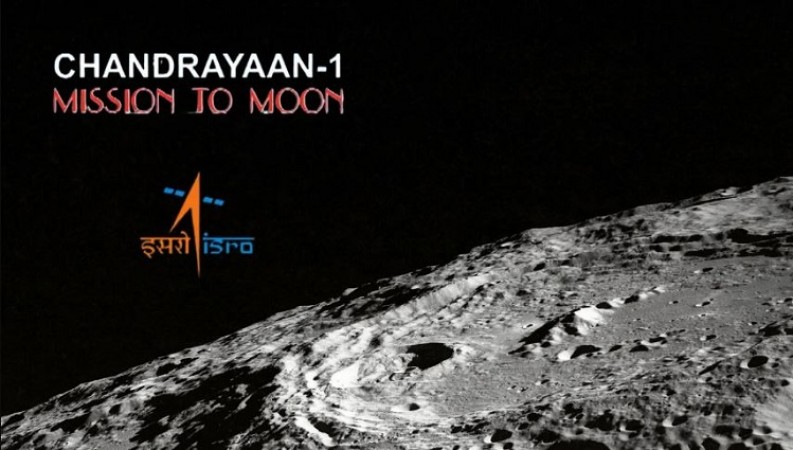
Lunar exploration takes a fascinating twist as Chandrayaan-1 data reveals a startling connection between Earth and the Moon. Hidden within the mysterious lunar highlands around the southern pole, water is emerging from the depths of shadowy craters. The secrets of this lunar phenomenon lie in the captivating dance of electrons.
Unlike anywhere else on the Moon, the Sun's light barely grazes the bottom of certain deep craters in the South Pole region. These icy enclaves are the focus of global space exploration efforts. The question is, how does water persist in these sun-deprived corners of our celestial neighbor?
Thanks to remote sensing data collected by the Moon Mineralogy Mapper during ISRO's Chandrayaan 1 mission from 2008 to 2009, scientists have unraveled a startling revelation. It appears that Earth's electrons may be the catalyst for water formation on the lunar surface.
Earth's magnetic field, generated deep within its core, forms a protective shield known as the magnetosphere. Within this shield resides a region called the plasma sheet, harboring high-energy particles. This plasma sheet extends into the magnetotail of Earth, a zone that the Moon periodically traverses. During this journey, the Moon finds refuge from the intense solar wind particles.
However, it is here, within the magnetotail, that high-energy electrons from Earth embark on a unique journey. They engage in a transformative interaction with the Moon's surface, contributing to lunar weathering and potentially playing a pivotal role in water creation.
These groundbreaking findings have been published in Nature Astronomy, with Shuai Li leading the research. Li expresses his astonishment, saying, "To my surprise, the remote sensing observations showed that the water formation in Earth's magnetotail is almost identical to the time when the Moon was outside of Earth's magnetotail. This indicates that, in the magnetotail, there may be additional formation processes or new sources of water not directly associated with the implantation of solar wind protons. In particular, radiation by high-energy electrons exhibits similar effects as the solar wind protons."
The next frontier in this electrifying lunar saga lies in further investigations of the plasma environment and water content during various lunar phases as the Moon journeys through Earth's magnetotail. NASA's Artemis Programme is poised to unveil more secrets of this cosmic connection.
Join us as we embark on a captivating journey into the realm of lunar mysteries and the electrifying forces that shape our lunar neighbor's watery destiny.
Aditya L1 Mission Achieves Success with Fourth Earthbound Burn for Orbit Expansion